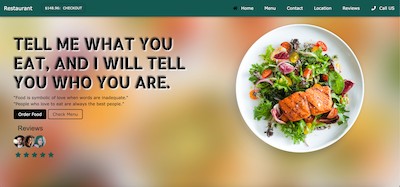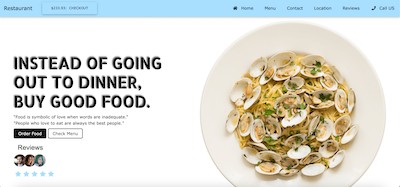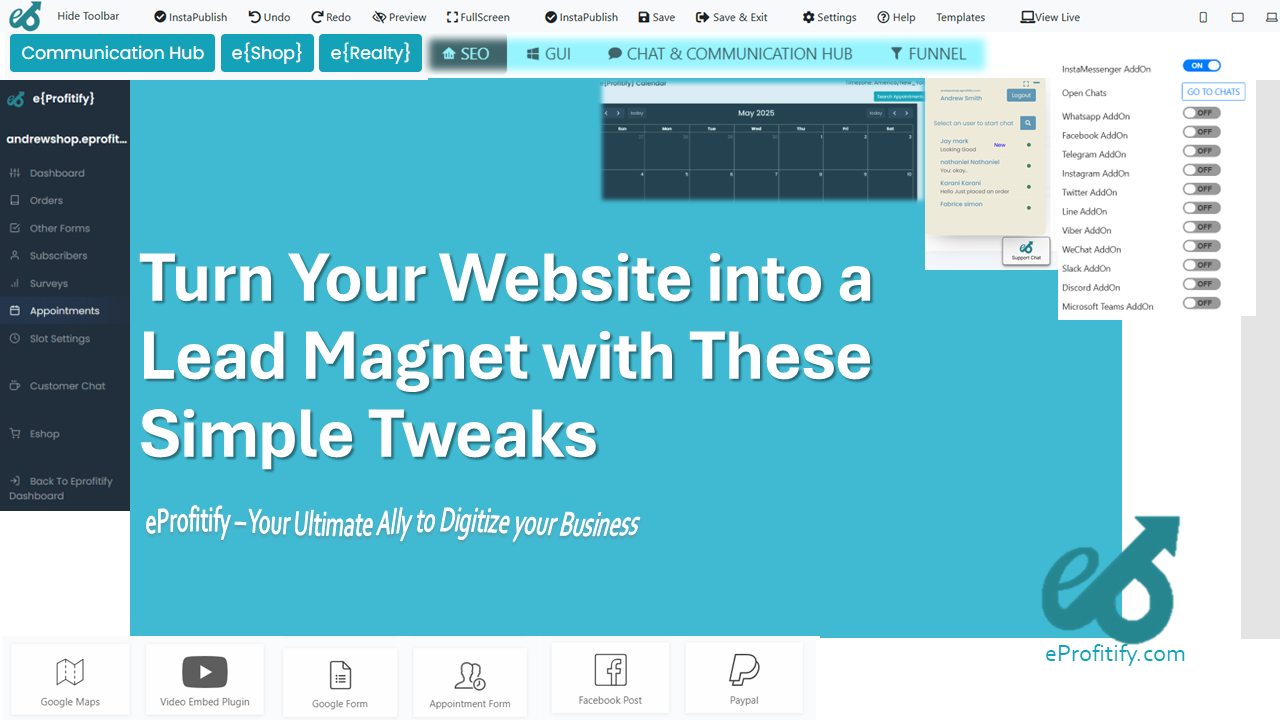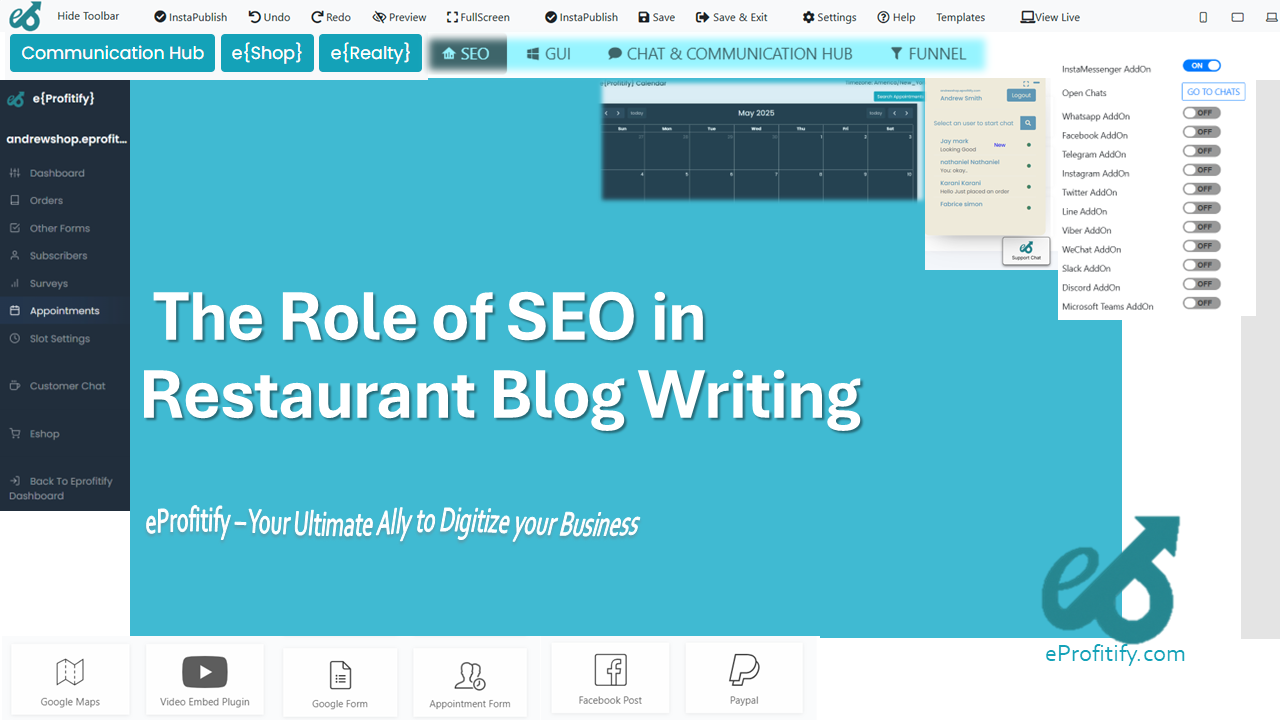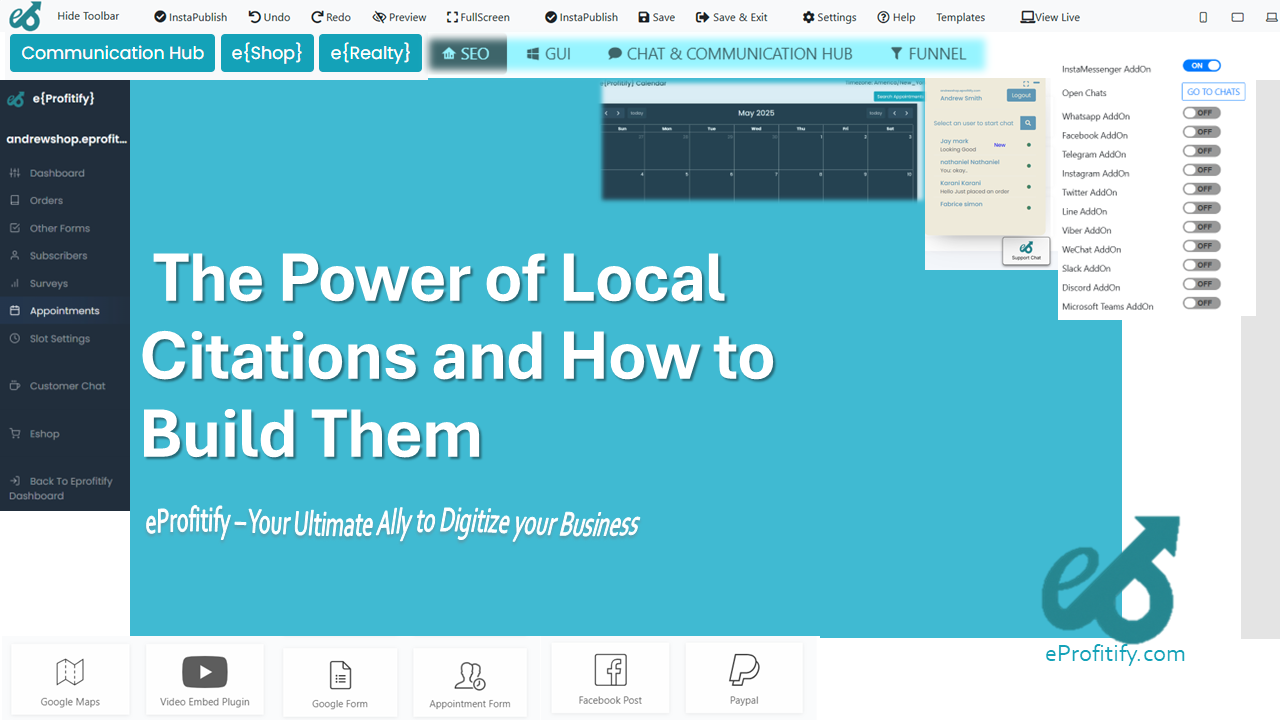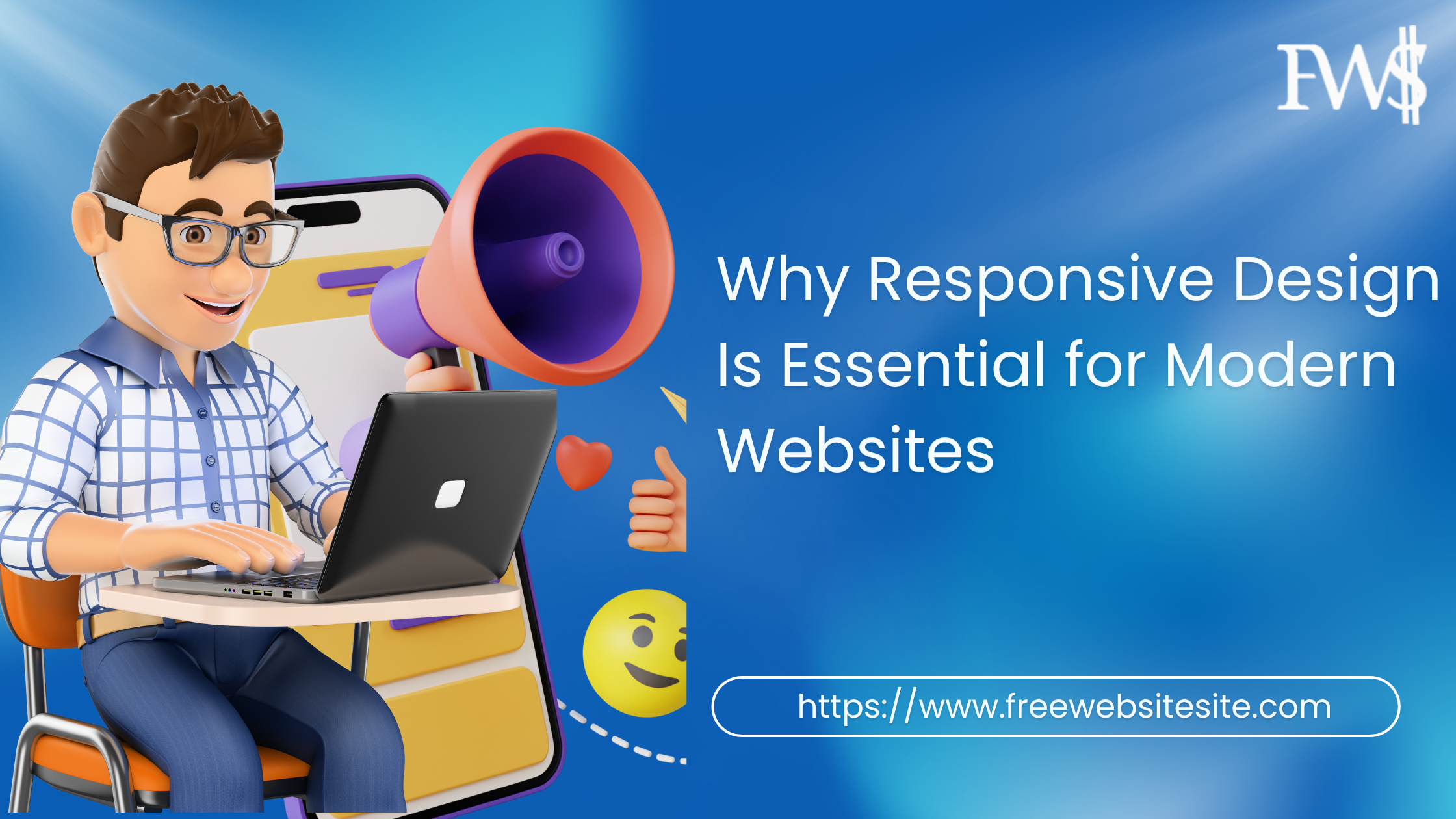Setting and Achieving Online Marketing Goals for Your Restaurant
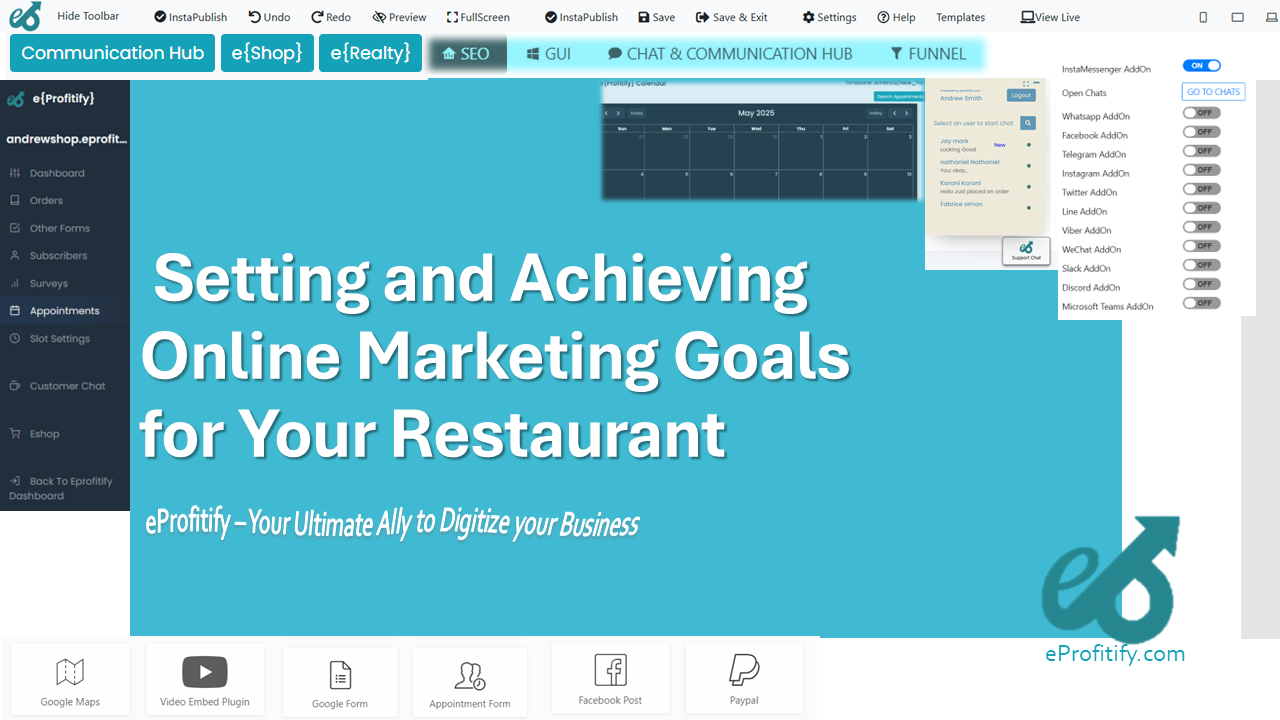
Setting and Achieving Online Marketing Goals for Your Restaurant
Harnessing Data and Technology for Success
The restaurant industry is fiercely competitive, with 60% of consumers ordering takeout or delivery weekly (Statista). In this digital age, effective online marketing is no longer optional—it's essential. A robust online presence can drive foot traffic, boost sales, and foster customer loyalty. This article explores how to set and achieve impactful online marketing goals for your restaurant, supported by actionable strategies, key statistics, and the role of tools like Eprofitify, a leading platform offering instant messaging, appointment management, ecommerce, CRM, and more.
1. The Importance of Online Marketing for Restaurants
Today, 90% of consumers visit a website or contact a business after finding them via search engines (BrightLocal). With platforms like Google, Instagram, and Yelp influencing dining decisions, restaurants must prioritize digital visibility. Key benefits include:
- Increased Reach: 46% of Google searches are local, highlighting opportunities to attract nearby customers.
- Customer Trust: 80% of diners check online reviews before dining (BrightLocal).
- Revenue Growth: Restaurants with strong social media engagement grow 20% faster (Toast).
To capitalize on these opportunities, setting clear, strategic goals is critical.
2. Setting SMART Marketing Goals
SMART goals—Specific, Measurable, Achievable, Relevant, Time-bound—provide a roadmap for success. Examples include:
- Website Traffic: Increase organic traffic by 30% in 3 months via SEO.
- Social Media: Grow Instagram followers by 15% monthly through user-generated content campaigns.
- Customer Retention: Boost email subscribers by 25% in 6 months using loyalty incentives.
Align goals with broader business objectives, such as expanding delivery services or improving review ratings.
3. Strategies to Achieve Online Marketing Goals
A. Optimize for Local SEO
- Claim your Google Business Profile listing, ensuring accurate hours, menus, and photos.
- Target keywords like “best sushi near me” to rank higher in local searches.
B. Leverage Social Media
- Platforms like Instagram drive engagement; posts featuring videos receive 38% more engagement (HubSpot).
- Collaborate with food influencers to amplify reach.
C. Email Marketing
- Email campaigns yield a 4400% ROI (Campaign Monitor). Segment audiences for personalized offers (e.g., birthday discounts).
D. Online Advertising
- Use geo-targeted Facebook/Google Ads to promote seasonal promotions. Restaurants see an average $8 ROI for every $1 spent on Google Ads.
E. Encourage Reviews
- A 1-star increase on Yelp can boost revenue by 5–9% (Harvard Business Review).
4. How Eprofitify Elevates Your Marketing Efforts
Managing these strategies requires seamless coordination. Eprofitify emerges as an all-in-one solution, offering tools tailored for restaurants:
- Instant Messaging: Engage diners in real-time via live chat, reducing response times and resolving queries instantly.
- Appointment Management: Streamline reservations and reduce no-shows with automated reminders.
- Ecommerce Integration: Enable online ordering and payment processing, catering to the 60% of consumers ordering delivery weekly.
- CRM System: Track customer preferences and order history to personalize marketing campaigns, improving retention.
- Analytics Dashboard: Monitor campaign performance and adjust strategies using real-time data.
Eprofitify’s unified platform consolidates fragmented workflows, enabling restaurants to focus on growth. For instance, integrating CRM with email marketing can increase repeat visits by 15% through targeted offers.
5. Measuring Success and Iterating
Analytics are vital for refining strategies. Track metrics like:
- Conversion Rates: From clicks to reservations or orders.
- Social Engagement: Likes, shares, and hashtag performance.
- Customer Lifetime Value (CLV): Increased through personalized CRM efforts.
Eprofitify’s dashboard simplifies this process, offering insights into ROI and customer behavior. If a campaign underperforms, pivot quickly—test new ad creatives, adjust SEO keywords, or enhance email content for mobile users (56% unsubscribe if emails aren’t mobile-friendly; Litmus).
6. Conclusion
In an era where digital visibility drives dining decisions, restaurants must adopt strategic online marketing practices. By setting SMART goals, leveraging platforms like Instagram and Google Ads, and utilizing tools such as Eprofitify, businesses can enhance efficiency and profitability. With features like instant messaging, CRM, and ecommerce integrations, Eprofitify empowers restaurants to build lasting customer relationships and stay ahead in a competitive landscape.
Success lies in continuous measurement and adaptation. Start today—your next loyal customer could be a click away.
Word Count: ~1000 words
By combining data-driven strategies with powerful tools like Eprofitify, restaurants can transform their online presence into a growth engine, ensuring they not only survive but thrive in the digital age.

